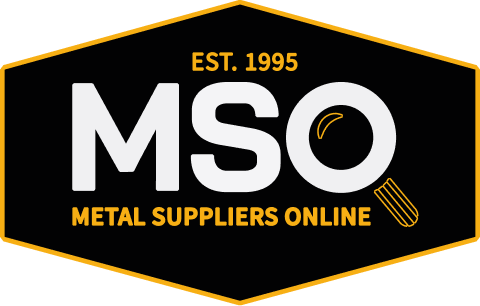Back To Browse
Carbon Steels
Carbon Steels 1020
Aging Procedure
Not applicable.
Annealing Procedure
A full anneal is done at 1600 to 1800 F followed by slow furnace cooling. This will give a tensile strength of about 65 ksi. A stress relief anneal may be done at 1000 F.
Applications
1020 steel is used for simple structural application such as cold headed bolts. It is often used in the case hardened condition.
Cold Workability
1020 steel is readily cold worked by all conventional methods. A stress relief anneal may be needed after extensive cold work.
Forgeability
Forge at 2300 down to 1800 F.
Formability
Formability is good by all conventional methods as the ductility of 1020 is good.
Hardening Procedure
1020 steel hardens by cold working an by heat treatment, quenching and tempering.
Heat Treatability
1020 may be hardened by heating to 1500 - 1600 F and then water quenching. It should then be tempered. More often it is used as case hardened by carburizing . The cost of doing any heat treatment to such a low carbon steel often precludes doing so for the modest return in mechanical properties obtained.
Hot Workability
Hot work in the range of 900 to 1200 F.
Machinability
Machinability is good at 65% compared to 1112 carbon steel as 100% baseline.
Principle Design Features
1020 is one of the very commonly used plain carbon steels. It has a nominal carbon content of 0.20% with approximately 0.50% manganese. It is a good combination of strength and ductility and may be hardened or carburized.
Tempering Procedure
Temper, following heat treatment and quenching, at 600 to 1000 F depending upon strength level desired. A 1000 F temper gives a tensile strength of 90 ksi.
Weldability
Readily weldable by all of the standard methods.
Known Forms
Bar-Hollow
Beams-H
Beams-I
Beams-Wide Flange
Casting-Centrifugal
Channel
Flanges
Flat Bar
Forgings-Discs
Grating-Bar (Smooth)
Hexagon Bar
Open Die Forgings
Pipe-Black
Pipe-Seamless
Pipe-Welded
Plate
Plate-Clad
Plate-Tread
Rail
Rod-Threaded
Round Bar
Round Bar - Precision Ground
Round Bar -TG&P
Seamless Rolled Rings
Sheet
Sheet-Flattened & Expanded
Sheet-Painted
Sheet-Perforated
Square Bar
Strip
Tees
Tube-DOM
Tube-Hydraulic
Tube-Rectangular
Tube-Round (Seamless)
Tube-Round (Welded)
Tube-Square
Wire Cloth
Wire Rod
Wire-Flat
Wire-Round
Wire-Shaped
Wire-Welding
Zees
Angle
Angle-Unequal Leg
Billet
Coil
Coil-Perforated
Contour Rings
Fasteners
Fittings
Forgings-Upset
Half Round
Hexagon (Metric)
Ingot
Mandrel Rings
Octagonal Bar
Pipe-Spiral Welded
Round Bar - Metric
Shafts
Shapes-CD
Shapes-Extruded
Shapes-HR
Square Bar -Metric
Tube-Hexagonal
Tube-Octagonal
Tube-Oval/Oblong
Welded Rings
Additional Data
Specifications
5032,5046,5054,A29 (1020),A510 (1020),A512 (1020, MT 1020),A513 (MT 1020),A519 (1020, MT 1020),A544 (1020),A575 (M1020),A576 (1020),A635 (1020),A659 (1020),A787 (MT 1020),A794 (1020),A827,A830,S-11310 (CS 1020),S-16788,S-7952,T-3520,J1397 (1020),J403 (1020),J412 (1020),G10200Dismiss
Chemical Elements
| Carbon | 0.17 - 0.23 |
| Iron | Balance |
| Manganese | 0.3 - 0.6 |
| Phosphorus | 0.04 max |
| Sulphur | 0.05 max |
Physical Properties
Density: 0.284lb/in³
Melting Point: 2760°F
Specific Gravity: 7.86
Specific Heat: 0.107BTU/lb·°F
Thermal Conductivity: 30BTU/hr·ft·°F
Thermal Expansion: 6.7µin/in·°F
Mechanical Properties
Modulus of Elasticity – Tension: 30MSI
Modulus of Elasticity – Torsion: 11MSI
Poissons Ratio: 0.3
Mechanical Test Data
| Form | Round Bar |
| Condition | Cold Drawn |
| Measurement Temperature | 68°F |
| Brinell Hardness | 126HB |
| Elongation | 24% |
| Reduction of Area | 54% |
| Rockwell Hardness | B79HRX |
| Tensile Strength | 64KSI |
| Yield Strength | 54KSI |
| Form | Round Bar |
| Condition | Hot Rolled |
| Measurement Temperature | 68°F |
| Brinell Hardness | 137HB |
| Elongation | 25% |
| Reduction of Area | 50% |
| Rockwell Hardness | B76HRX |
| Tensile Strength | 55KSI |
| Yield Strength | 30KSI |
Find the metal you're looking for today.

